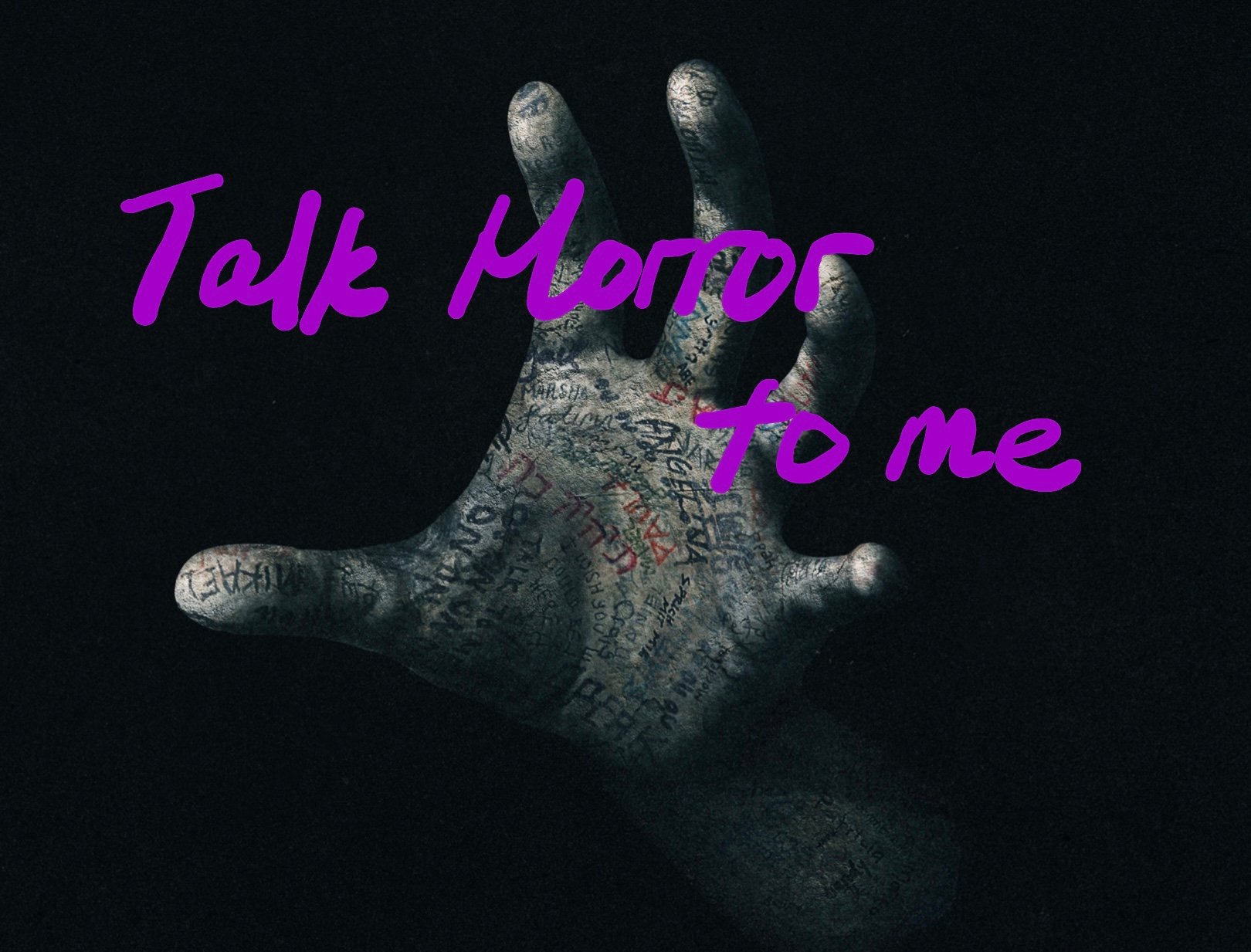In “Talk Horror to Me,” columnist Emma Wang ’24 reviews horror, psycho thrillers and all things scary released in the past year.
“Talk to Me” (2022) marked the directorial debut of popular YouTube duo RackaRacka, composed of Phillip and Danny Philippou.
In the film, the latest party trick involves holding an embalmed hand while uttering the words “talk to me.” The trick allows spirits to take possession of one’s body on one condition: you can’t let the spirits inside you for over 90 seconds.
Despite the film’s supernatural elements, “Talk to Me” is a touching tale of people’s desperate yet misdirected attempts to seek human connections. Right off the bat, two incidents establish 17-year-old Mia’s (Sophie Wilde) trauma and her inability to properly handle it. She struggles to cope with her mother’s suicide on the second anniversary of her mother’s death. On the way to her best friend Jade’s (Alexandra Jensen) house, she’s unable to bring herself to perform a mercy kill of a dying kangaroo on the road.
After returning to Jade’s house, Mia appears to be a normal, happy teenager when bantering with Jade. However, Jade is busy texting her boyfriend. Mia’s expression then betrays the emotional isolation she feels, and the title bears its first significance: Mia’s plea to the people in her life to simply talk to her.
When videos of people being possessed circulate on Snapchat, Mia begs Jade to take her to her friend’s house, where the hand is guaranteed as a party trick. At the party, medium shots of Mia standing alone, drinking, with people around her blurred visually, signify her exclusion from the rest of her surroundings. Her ability to talk to people is only ignited when she volunteers to hold the hand.
There are plenty of grotesque moments in the movie. After Mia utters the words that open the portal to the spirit world, the camera follows her gaze and lands upon an old man with dead eyes, his hand in hers. Mia screams and retreats back into her chair. It takes everyone chanting “do it, do it” for Mia’s shocked expression to slowly turn into a smile, as she reaches out her hand again.
More than the jumpscares and the body horror, the movie disturbs through its potent portrayal of Mia’s misdirected attempts to seek human connections. Instead of talking to her father Max (Marcus Johnson) about her mother’s death, Mia pursues dangerous activities like becoming “possessed,” spurred on by the seemingly supportive front of her peers.
The movie’s use of various shots heart-stoppingly magnifies these interactions. In Mia’s first disturbing encounter with the spirits, the camera captures the crowd smiling in anticipation and holding up phone flashlights. Then, audiovisual disjunction effects — such as a shot of Mia’s scared face being cut to the crowd’s smiles, or her panicked breathing cutting to the crowd’s laughter — further highlight the cruelty of the crowd and Mia’s helplessness.
The film introduces another form of human “disconnection”: the internet and social media, where people circulate videos of possessed people without their consent. These videos, presented as entertainment to social media users, remove them from the actual danger of possession and dehumanize the subjects experiencing the horror. Even as someone is stabbed to death, we see flashlights in the background of these videos and hear the shrieks of what could be both fear and delight.
We can see this “disconnection” when Jade’s boyfriend is possessed by a woman’s spirit: the usually innocent Christian boy suddenly starts moaning and grinding on the floor, which becomes the peak of the party’s entertainment, at the expense of his and Jade’s mortification. Captured into a 90-second video, his experience is diminished and joins the sea of other consumable, digestible and entertaining items that circulate the internet.
Beyond its thematic feats, the movie left many incidents under-explained, such as developments of the spirit world and the motivations of the spirits. Mia’s complex and sometimes perplexing character is built on the sacrifice of the rest of the cast, which mostly relies on tropes: Jade, the perfect rational friend and elder sister; Jade’s brother Riley, the sacrificial kangaroo and the innocent lamb; Mia’s father, the grieving and silent man who doesn’t know how to reach out to his daughter. Despite its faults, “Talk to Me” can be read as in the legacy of the ouija movies and a case-study for Freudian talk therapy.
“It’s all about connection,” the Philippou brothers said. The movie brings to light dangers in human relationships in the digital age, and, before you know it, the 90-seconds are up.
Editor’s Note: This article is a review and includes subjective thoughts, opinions and critiques.
